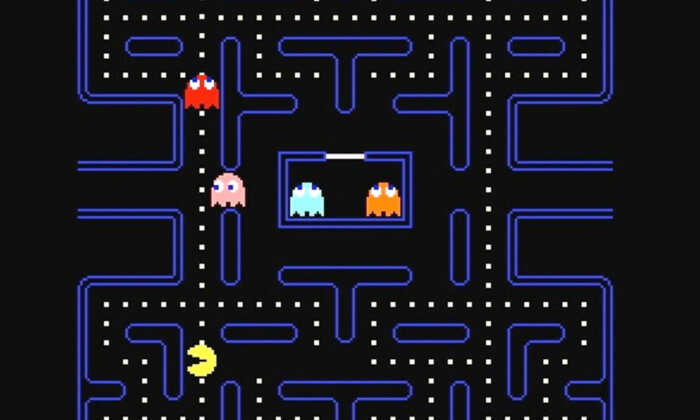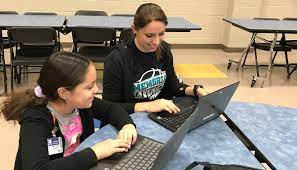Global education will make the world a better place
Global education has never been more important. For millions of students, personal and professional goals are closely woven into how connected the world is. At Stockton University alone, the Office of Global Engagement is partnered with dozens of schools throughout the world. The fact that Stockton is one of the hundreds of universities throughout the country that are partnered with organizations like IES Abroad and EF exemplifies the widely recognized importance of connecting young academics with other countries.

Since the pandemic, UNESCO established the Global Education Coalition, which is “a platform for collaboration and exchange to protect the right to education during this unprecedented disruption and beyond”, and focuses on maintaining global collaboration when the world can’t travel. 175 UN member states are part of the coalition, further symbolizing the way the world recognizes the importance of global interconnectivity when it comes to education. During the pandemic, maintaining global collaboration through education was, as we all know, virtual. IES Abroad still ran their programs but through online internships, which allowed students to meet professors and other academics from their host schools abroad.
Interweaving academics and the world ensures that students are exposed to learning from a variety of viewpoints, backgrounds, and beliefs. This allows for empathy and open-mindedness, especially when a student is immersed in a country or school and is thus provided with the first-hand experience of what that culture is like. The COVID-19 pandemic made this come to a screeching halt, but it still didn’t stop people from studying abroad the moment international borders reopened in early 2021 thanks to COVID-tested flights and high vaccination rates in countries like Israel and Uruguay.
For people like Nia Donfris from Madrid’s San Louis University, the pandemic hurled a set of challenges in front of her dream of studying abroad, but she still didn’t let it stop her. This resilience is important to note. Donfris is in the nursing field, which forces her to forge close relationships with people, so learning another language and culture is important for empathy. This is important for so many other career fields, and when a different culture is understood through first-hand experience, company productivity, employee contentment, and community outreach can be achieved at the highest capacity.
Creating a better world with these things starts with education, and when education is connected on a global scale (whether through virtual events or physically studying abroad), the quality of education, graduates, and professionals is enhanced.
Technology
While scrolling through twitter, I came across an article that I found interesting, with the hash tag #edtechchat. https://whoyouknow.org/playbook/leverage/ dives into the effect that technology has on children and the research behind it. It states that technology is definitely a beneficial tool for learning about new information, but is it always a good thing for children? Technology has a tremendous affect on the connections that children are able to make. A connection through technology is better than no connection at all, but it is not as resourceful as a face-to-face connection. A key aspect that we are losing in society today is empathy because people are not able to tell someones emotions and feelings through a screen. We are missing the in person reactions and facial expressions which are a serious part of relationships and developing connections. There are definitely positive and negatives to technology, but in today’s society, technology is everything but we need to still make the face-to-face connections.

Julie Barron
Video Games as a Form of Education
A response to Video Games Used as Learning Tools in Schools.

As a child, I remember being told that video games would rot my brain out. I’m sure every child who played video games can recall a similar saying or sentiment from their parents as well. Luckily, the children of this newer generation will no longer need to hear their parents talking down on their favorite hobby.
Video games are being integrated into the classroom as a learning tool rather than just for escapism or leisure. Here are a couple ways that video games benefit students and the classroom:
Critical Thinking
- Critical thinking is a common theme in video games. Players are faced with complex problems and situations and must calculate, discover, and test different solutions.
- Games like the Portal series require the player to use critical thinking skills to complete puzzles.
- Difficulty increases by level completion, challenging players at every level.
- Check out this article that explores problem solving skills and cognitive function in relation to video games like Portal.
Socialization & Teamwork
- Multiplayer games offer a community to sharpen your socialization and teamwork skills.
- Keep Talking and Nobody Explodes requires small groups to use their teamwork and socialization skills to articulate and describe the puzzles to their teammates, and those teammates must find the solution without ever physically seeing the puzzle.
- This game challenges the players to come up with clear and concise information in a social setting.
- The puzzle can not be solved alone, so the game requires players to learn and develop teamwork skills. Without quality teamwork skills, the game can get extremely frustrating.
Positive Failure

- When games produce new challenges, the player isn’t normally afraid to fail and try again.
- Video games teach children how to positively view failure. Just became the game is over, doesn’t mean you can’t self correct and start again.
- Players instead learn and develop new strategies to fix mistakes.
- If a game reaches the “game over” point, there’s almost always an inherent interest to try again. This can be driven by the want for success, competition, or just an interest in the game.
Video games produce many skills that help set students up for success. With the heightened need for educational technology, video games are a good way to promote learning and skill building both inside and outside the classroom!
Make sure to follow me on twitter: @samiweikle
VR Technology for Language Learning
By: Dara Sborea
When I first learned about VR platforms, I only ever imagined that they would be used in the gamer world. That is, after all, how VR was marketed. As with all things tech, I soon learned that there are limitless possibilities for the uses of VR. VR has been used to help people “travel” the world, to connect people with common interests, and even to help train future medical professionals around the world.
In addition to the uses mentioned above, VR is also a game changer in the world of language learning and teaching. Immerse is just one company on the cutting edge of this educational tool.
VR’s interactive nature can help motivate older students and keep younger students engaged because there is little chance of outside distraction while the VR headset is on.

VR allows practice on a level that isn’t possible in a traditional classroom setting where students listen to a teacher and one student at a time responds to prompts. With VR, students can work individually, or in small groups. Because of the nature of VR, students are not distracted by what other groups are doing. It also gives the teacher the option of grouping students by level, so accelerated students can work ahead while students who have a more difficult time can utilize their time in the lessons differently or at a slower pace.
VR additionally creates a bridge between in-person instruction and online instruction from home, where students often find it difficult to stay on-task.

The Immerse software allows teachers to isolate audio specifically for groups of students, so this makes it easier to differentiate lesson plans for a variety of students.
Another benefit of the Immerse software, which currently boasts 60 different languages, is that students can practice language in realistic situations.

Immerse software has programs that are appropriate for all age levels. There are game simulations for younger students, and practical situations, such as going to the grocery store or handling customs at the airport, for older students.


The final piece of information I would like everyone to know is the language acquisition happens much more quickly when role-play is implemented. It allows you to be totally immersed in a foreign language, which is the best way to learn. VR is the next best thing to being in a country where the language you are learning is spoken.
Thank you for reading my post!
Please follow me on twitter: @daradoodle124
Tags: edchat, edtech, education, globaleducation, globallearning, VRtech, VRteaching, languagelearning
Blog Post #4- Tatianna Competello
As I went through and read the seventeen goals that there are for the Sustainable Development Goals, the goal that had my interest the most is the fourth goal, which is Quality Education. As a future teacher, I want to make sure my students are feeling well, and ready to learn and engage in class. When a student is ready to learn and engage in a new lesson that is a good sign that they are eating well and confident about what is happening next. The most important part about Quality Education is reaching the goal. To start, it is important to know if your students are eating properly at home before coming to school. If your students are not eating right, or not eating at all they may have a hard time concentrating in school. It is a nice gesture as a teacher to always have a few snacks in class for students to pick on.

According to the website, Medium.com with the article titled, “The Only 3 Things, You Need To Provide Quality Education.” there are only three important goals when it comes to delivering Quality Education. The first goal to be reached according to the article is, to study the material the students are learning in class outside of class at their own pace. Students should find a quiet place to study and review the work outside of class. Sometimes throughout the school day, students could get a lot of information thrown at them at once. Which leads to students not comprehending their work or forgetting what they learned at the end of the day. That is why it is so important for students to go over what they learned in class at home at their own pace. The article states that “Engaging with your curiosity and creativity is crucial for quality learning.” I could not agree with this statement enough. Students must find a fun and creative way to learn and understand their work. This way when the students look back at their work they will have a better chance of remembering it since it was turned into something fun.
The second goal that needs to be reached to deliver Quality Education is, practicing with group learning. I think the best way for students to engage with each other in school is by creating assignments that have to do with group learning. This way students can get to know each other, and see what ideas everyone else has. When students get the opportunity to engage in group discussions it helps the students to think better on their own. According to the article, it states that “You see viewpoints you would not have thought about and can have multiple points of reference to retain more information. Verbalizing things you’ve previously learned also helps you create stronger connections in your brain.” I think this is an excellent point because when students get together in a group they can see the assignment from other students’ perspectives, and have them add more details to their assignment they would have never thought of on their own. The students could also learn the lesson better through each other. There may be some students struggling to understand what the teacher is explaining, but then once their classmates explain the lesson to them, the students understand the lesson properly. Some of these students can learn their information better by hearing it out loud from their classmates. This way they can retain the information differently than before. The whole point of this goal is to get the lesson that is being taught across to the students and making sure they understand and remember the information moving forward.
The last goal that needs to be reached to deliver Quality Education is, doing one-on-one mentorship. Having a mentor or someone to look up to as you are doing your work can help you succeed. Having a mentor by your side can help you get rid of all the distractions around you by having you create a study pattern that works best for yourself. For this goal, it is important to help your students find skills that work best for them, and help your students when it comes to seeing how well they did with the lesson. When students have a mentor or tutor to turn to they start to feel confident with their work because they have someone alongside them boosting their confidence. A mentor does not always have to be an adult. As a teacher, you can group students together in the same classroom to work together and help each other if some students are struggling. This way the teacher can come around to each group and see how the students are doing in the group, and as individuals.


Educational Technology
By Tiffany Imparato

While searching twitter I came across an article that was hash tagged #EdTech that caught my eye. From Hybrid to Blended Learning: Using Tech to Improve Students’ Experience, by Douglas Konopelko that explores how the classroom has changed to embrace technology. Previously K-12 education did not include hybrid learning and advanced forms of technology however going forward most classrooms will be forever changed. The pandemic changed the way teachers could deliver resources and information to their students and brought technology into virtually every subject being taught. With students and teachers being introduced to various digital tools many are embracing blended learning styles to stay. According to Konopelko, “the surge in educational technology pushed blended learning forward, making it an integral component in many classrooms,” as a future educator I encourage this journey. The idea of blended learning and giving students greater access to digital tools is one of the few positive impacts that has arose due to this global pandemic. We are seeing students at very young ages utilizing zoom, chrome books, google classroom, and multiple other technology based learning tools. Giving our students the accessibility and knowledge to utilize technology in their day to day lives help prepare them for their futures.
#blogpost
#edchat
#EdTech
#edtech #edcollab
#edtechchat
#edtechchat #technologyintegration
#GEN2108
#globaleducation
#globaleducationtools
#googlecardboard
#HyperDocs
#microsofteducation
#nationalgeographic
#outofeden
#outofedenwalk
#paulsalopek
#sustainabledevelopmentgoals
#virtualfieldtrip
#virtualreality
#whyhyperdocs
ancient rome
changemakers
collaboration
cultural awareness
cultural experience
edtechchat
education
education tech
english subtitles
global collaboration
global education
global learning
GoogleDocs
Microsoft
microsoft translator
out of eden walk
rome
sdgs
subtitles
sustainable developmental goals
Technology Integration
understanding culture
virtual
virtual field trip
virtualtour
Blog Post 1- Tatianna Competello.
I have found an article that caught my interest on Twitter, by using the hashtag, #edchat. This article comes from the account @Elmagazine. This article is titled “Small Shifts in Teacher Talk Make a Big Difference.” This article caught my attention just by the title of it. When you are a teacher and you are trying to teach a new lesson to students it truly does help to make little changes for the students to be more excited about what they are learning. The article, it talks about how teachers plan out lessons in their head and have everything written down, but when it comes to actually teach the lesson in class things might not have seemed as exciting as you thought. I also think a good point that is talked about in the article is how you communicate with your students. Making little shifts in the way you deliver a message to your students make a big difference. As stated in the article, instead of saying to your students, “I have an exciting math activity planned for you today!” You can say, “You’re going to get to participate in an exciting math activity today.” When you think about it making minor changes in what you say to your students can make a huge change. By changing what you say as a teacher it can help the students to be more interested in the lesson and excited to learn. In the article, there Is a chart with several examples of what words you can change around for your students and look at things from their perspective. I think these examples are very useful and can help make a change in the classroom. Overall, I thought this article was very interesting and educational.


Recent Comments